We have received a lot of questions around the economics of ad-lib meal feeding to cattle this winter. Meal costs have gone from €260/t this time last year to €420/t this week and some farmers are questioning the ad-lib feeding route for finishing cattle this winter.
For bull finishing, it’s hard to walk away from the efficiency gains that ad-lib feeding will bring in terms of performance and weight gain. If we take a young bull doing 1.7kg/day on ad-lib meal you would expect him to kill out at 70% during the ad-lib feeding phase. This is a higher killout percentage at this stage as a lot of lean carcase is put on the animal.
The rest of the animal, like the head and legs, won’t get a lot heavier at this stage.

Bulls on Tullamore Farm. \ Philip Doyle
A 1.7kg daily liveweight gain will transfer into 1.2kg of carcase gain. At today’s price of €4.90/kg for an under 16-month bull grading U=3+, that bull will gross €5.88/day. A 650kg bull will consume approximately 12kg of meal which will cost about €5.04/day in meal costs alone.
Some 1kg of straw will add another 12c to 15c/day to bring feed costs close to €5.20/kg. So, margin over feed will work out somewhere between 60c/kg and 70c/kg, depending on where feed costs and beef price ends up.
Higher performance and cheaper concentrates will obviously change the figures. Another aspect of ad-lib feeding is the capital required for feeding this winter v last winter. If we take a 120-day feeding period putting 1.4t/meal into each bull that works at €588/head, up €224/head on last year.
On 100 bulls, it’s a cost of almost €60,000 in feed to fund this year. Ad-lib feeding done correctly will deliver high performance with the right animals. We have outlined a few tips below on getting ad-lib feeding right.
The most important aspect of finishing cattle is to have a proper plan in place.
It is not as simple as putting cattle into the shed and feeding them concentrates at random. First of all, it should be decided what age you plan on slaughtering your animals. Once the system is decided on and type of animal agreed, you can plan out your feeding regime
Best practice is to work out the target slaughter date and work backwards, planning for regular weighing and dietary adjustments along the way.
Measure
It is vital to constantly monitor the performance of the cattle being finished. The first step in doing this is to measure the weight gain of the animal.
The target weight gain per day for animals during the finishing period is 1.7kg to 1.9kg/day in bulls, 1.3kg/day in steers and 1.1kg/day in heifers. Some specialist finishing farms will be able to outperform these figures but, in general, the above figures are a good guide to budget with.
After weighing the animal, measuring the amount of feed taken in by the animals is another worthwhile undertaking. While measuring accuracy can be difficult, being aware of the amount of feed being given to an animal, less the amount of feed left behind by the animal (if any), will give a pretty good indication. Even if this is done across a pen of bulls, it’s better than working blind.
Facilities
Having animals indoors allows for the controlled feeding of concentrates and roughage is advised. There is no correct facility for feeding cattle but there are certain characteristics that a shed must have.
First and foremost, it needs to be safe and secure.
Animals on ad-lib, particularly bulls, are very strong and very heavy. Penning and gates should be strong to prevent damage to facilities and also protecting the farmer at feeding time, weighing and loading.
Facilities should also keep cattle clean. There are increased pressures coming from factories to have clean animals, so whether it is slats or straw bedding being used, the pens need to be dry and free from large amounts of dung.
The ideal shed is where animals feed on slats and move back to a straw-bedded area for lying.
Animals also need space. Overcrowding will negatively impact an animal’s performance as they cannot lie-out to thrive. However, too much space is also an issue in some sheds, as animals have too much room for activity and fighting can occur, especially if bulls are upset through a changed routine.
Finally, any ad-lib facility should be bird-proof, or at least the feed face should be bird-proofed to prevent feed spoilage and risk or harmful feed contamination.
On average, animals will eat about 2% to 2.2% of body weight per day. The five components of an ad-lib diet are energy, protein, fibre, minerals and water.

The best ration is not necessarily the cheapest – it is the feed that is going to make an animal reach its performance targets and keep the animal healthy.
The ad-lib system is suitable for short finishing periods of approximately 60 to 90 days for steers and heifers, and up to 150 days for bulls. After this length, the weight gain in animals can drop off.
Ration
The best ration is not necessarily the cheapest – it is the feed that is going to make an animal reach its performance targets and keep the animal healthy. The two key components to look out for in an ad-lib finishing ration are energy and protein.
Energy intake is the main determinant of liveweight gain of cattle. Therefore, maximising energy intake is important. In terms of protein, for finishing steers, heifers and bulls, the aim is for 11% to 12% crude protein/kg on a dry matter basis.
Aim for a high cereal content (70%) with some flaked or bruised products. A ration that will be fed ad-lib should also contain buffer and yeast in the mix to help prevent rumen problems.
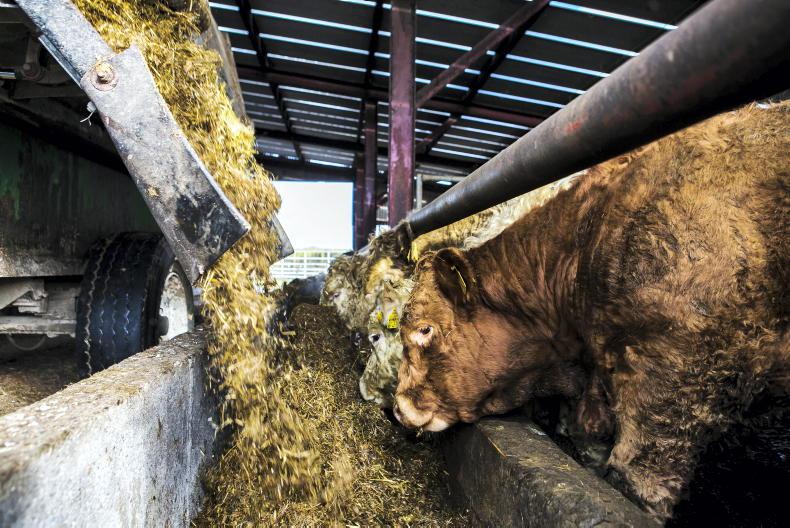
If self-mixing a ration, it is important to remember these key components and a specialist diet should be drawn up. It is also vital to ensure the mix is consistent each day with regular feed times to optimise intake.
Water
The most important component of a healthy diet is water. Water can become a huge issue on farms when it comes to ad-lib finishing. There are two factors: the cleanliness of water and the availability of water.
A finishing animal eating 14kg to 15kg of dry matter will drink up to 60l of water each day. Drinkers should be big enough so cattle can stick their mouth in and drink freely – small bowl drinkers are not sufficient. Have a plan in place if there is severe frost or snow as to how ad-lib feeding can continue.
Straw
While concentrates are the main component of a finishing diet, they would be rendered useless without the correct inclusion of straw or another forage source in the diet.
When feeding meals ad-lib, ensure that animals receive at least 10% to 15% of their dietary dry matter as straw, hay or grass silage, in order to maintain rumen function.
Ideally, straw should be chopped to a length of 5cm and included daily in a consistent total mixed ration (TMR) to reduce sorting, if a diet feeder is being used. Some farmers keep young bulls on high DMD silage at the 10- to 13-month stage to reduce the amount of concentrates fed. Silage quality needs to be high dry matter digestibility in this case (70 DMD to 75 DMD).
Minerals
The inclusion of minerals is something that should be considered. Minerals can have a significant impact on the performance of finishing animals, with the potential for extra weight gain where the mineral balance is correct.
There has also been research to suggest that the effect of antibodies, administered through vaccinations, is amplified with the use of minerals in an animal’s diet.
Be careful around feeding standard rations at ad-lib rates as mineral intake will be a lot higher in these cases.
If an animal is not healthy, it will not thrive, regardless of how much feed is being fed.
When addressing animal health, prevention is always better than the cure.
With this in mind, a health plan should be put in place before housing. Clipping backs and tails and using a lice treatment is necessary.
After this, several options must be considered with your local vet. Dosing for worms is recommended at housing and vaccination against clostridial diseases is common practice.
Where animals are being purchased in, vaccination for pneumonia should also be strongly considered. A faecal sample should be taken to determine fluke and worm status.
When talking about rumen health in a finishing animal, the main thing to avoid is acidosis.
Acidosis is caused by a rapid lowering of the pH within an animal’s rumen caused by a dietary problem. The pH within the rumen should be kept above 6.
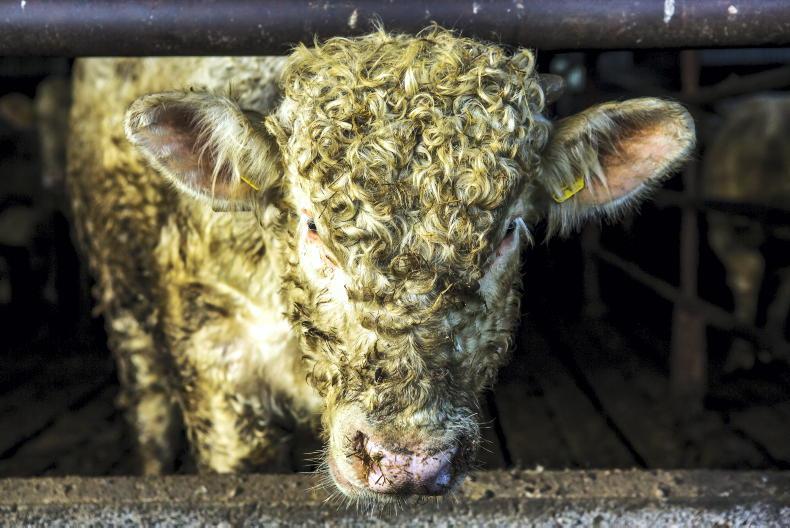
Best practice to maintain rumen health is to avoid sudden changes of diet. However, for many farmers, the diet alteration period can actually be too long which results in time being lost. A feed introduction and buildup period should be no longer than four to six weeks.
Ad-lib feeding will still leave a margin over feed costs when feeding young bulls.A high cereal diet is important to maximise the energy content of the diet.Consistency is key. Animals on ad-lib feeding like a regular routine.Aim for liveweight gains of 1.7kg to 1.9kg/day in bulls, 1.3kg/day in steers and 1.1kg/day in heifers.A feed buffer and/or yeast should be included in the ration to help prevent rumen/digestive problems.A plentiful supply of clean water is very important in ad-lib systems.A health plan is a must to maximise liveweight gain and performance.Good facilities are also important with good lying space and good feeding space. Ideally, finishing cattle will have access to a straw bed.
We have received a lot of questions around the economics of ad-lib meal feeding to cattle this winter. Meal costs have gone from €260/t this time last year to €420/t this week and some farmers are questioning the ad-lib feeding route for finishing cattle this winter.
For bull finishing, it’s hard to walk away from the efficiency gains that ad-lib feeding will bring in terms of performance and weight gain. If we take a young bull doing 1.7kg/day on ad-lib meal you would expect him to kill out at 70% during the ad-lib feeding phase. This is a higher killout percentage at this stage as a lot of lean carcase is put on the animal.
The rest of the animal, like the head and legs, won’t get a lot heavier at this stage.

Bulls on Tullamore Farm. \ Philip Doyle
A 1.7kg daily liveweight gain will transfer into 1.2kg of carcase gain. At today’s price of €4.90/kg for an under 16-month bull grading U=3+, that bull will gross €5.88/day. A 650kg bull will consume approximately 12kg of meal which will cost about €5.04/day in meal costs alone.
Some 1kg of straw will add another 12c to 15c/day to bring feed costs close to €5.20/kg. So, margin over feed will work out somewhere between 60c/kg and 70c/kg, depending on where feed costs and beef price ends up.
Higher performance and cheaper concentrates will obviously change the figures. Another aspect of ad-lib feeding is the capital required for feeding this winter v last winter. If we take a 120-day feeding period putting 1.4t/meal into each bull that works at €588/head, up €224/head on last year.
On 100 bulls, it’s a cost of almost €60,000 in feed to fund this year. Ad-lib feeding done correctly will deliver high performance with the right animals. We have outlined a few tips below on getting ad-lib feeding right.
The most important aspect of finishing cattle is to have a proper plan in place.
It is not as simple as putting cattle into the shed and feeding them concentrates at random. First of all, it should be decided what age you plan on slaughtering your animals. Once the system is decided on and type of animal agreed, you can plan out your feeding regime
Best practice is to work out the target slaughter date and work backwards, planning for regular weighing and dietary adjustments along the way.
Measure
It is vital to constantly monitor the performance of the cattle being finished. The first step in doing this is to measure the weight gain of the animal.
The target weight gain per day for animals during the finishing period is 1.7kg to 1.9kg/day in bulls, 1.3kg/day in steers and 1.1kg/day in heifers. Some specialist finishing farms will be able to outperform these figures but, in general, the above figures are a good guide to budget with.
After weighing the animal, measuring the amount of feed taken in by the animals is another worthwhile undertaking. While measuring accuracy can be difficult, being aware of the amount of feed being given to an animal, less the amount of feed left behind by the animal (if any), will give a pretty good indication. Even if this is done across a pen of bulls, it’s better than working blind.
Facilities
Having animals indoors allows for the controlled feeding of concentrates and roughage is advised. There is no correct facility for feeding cattle but there are certain characteristics that a shed must have.
First and foremost, it needs to be safe and secure.
Animals on ad-lib, particularly bulls, are very strong and very heavy. Penning and gates should be strong to prevent damage to facilities and also protecting the farmer at feeding time, weighing and loading.
Facilities should also keep cattle clean. There are increased pressures coming from factories to have clean animals, so whether it is slats or straw bedding being used, the pens need to be dry and free from large amounts of dung.
The ideal shed is where animals feed on slats and move back to a straw-bedded area for lying.
Animals also need space. Overcrowding will negatively impact an animal’s performance as they cannot lie-out to thrive. However, too much space is also an issue in some sheds, as animals have too much room for activity and fighting can occur, especially if bulls are upset through a changed routine.
Finally, any ad-lib facility should be bird-proof, or at least the feed face should be bird-proofed to prevent feed spoilage and risk or harmful feed contamination.
On average, animals will eat about 2% to 2.2% of body weight per day. The five components of an ad-lib diet are energy, protein, fibre, minerals and water.

The best ration is not necessarily the cheapest – it is the feed that is going to make an animal reach its performance targets and keep the animal healthy.
The ad-lib system is suitable for short finishing periods of approximately 60 to 90 days for steers and heifers, and up to 150 days for bulls. After this length, the weight gain in animals can drop off.
Ration
The best ration is not necessarily the cheapest – it is the feed that is going to make an animal reach its performance targets and keep the animal healthy. The two key components to look out for in an ad-lib finishing ration are energy and protein.
Energy intake is the main determinant of liveweight gain of cattle. Therefore, maximising energy intake is important. In terms of protein, for finishing steers, heifers and bulls, the aim is for 11% to 12% crude protein/kg on a dry matter basis.
Aim for a high cereal content (70%) with some flaked or bruised products. A ration that will be fed ad-lib should also contain buffer and yeast in the mix to help prevent rumen problems.

If self-mixing a ration, it is important to remember these key components and a specialist diet should be drawn up. It is also vital to ensure the mix is consistent each day with regular feed times to optimise intake.
Water
The most important component of a healthy diet is water. Water can become a huge issue on farms when it comes to ad-lib finishing. There are two factors: the cleanliness of water and the availability of water.
A finishing animal eating 14kg to 15kg of dry matter will drink up to 60l of water each day. Drinkers should be big enough so cattle can stick their mouth in and drink freely – small bowl drinkers are not sufficient. Have a plan in place if there is severe frost or snow as to how ad-lib feeding can continue.
Straw
While concentrates are the main component of a finishing diet, they would be rendered useless without the correct inclusion of straw or another forage source in the diet.
When feeding meals ad-lib, ensure that animals receive at least 10% to 15% of their dietary dry matter as straw, hay or grass silage, in order to maintain rumen function.
Ideally, straw should be chopped to a length of 5cm and included daily in a consistent total mixed ration (TMR) to reduce sorting, if a diet feeder is being used. Some farmers keep young bulls on high DMD silage at the 10- to 13-month stage to reduce the amount of concentrates fed. Silage quality needs to be high dry matter digestibility in this case (70 DMD to 75 DMD).
Minerals
The inclusion of minerals is something that should be considered. Minerals can have a significant impact on the performance of finishing animals, with the potential for extra weight gain where the mineral balance is correct.
There has also been research to suggest that the effect of antibodies, administered through vaccinations, is amplified with the use of minerals in an animal’s diet.
Be careful around feeding standard rations at ad-lib rates as mineral intake will be a lot higher in these cases.
If an animal is not healthy, it will not thrive, regardless of how much feed is being fed.
When addressing animal health, prevention is always better than the cure.
With this in mind, a health plan should be put in place before housing. Clipping backs and tails and using a lice treatment is necessary.
After this, several options must be considered with your local vet. Dosing for worms is recommended at housing and vaccination against clostridial diseases is common practice.
Where animals are being purchased in, vaccination for pneumonia should also be strongly considered. A faecal sample should be taken to determine fluke and worm status.
When talking about rumen health in a finishing animal, the main thing to avoid is acidosis.
Acidosis is caused by a rapid lowering of the pH within an animal’s rumen caused by a dietary problem. The pH within the rumen should be kept above 6.

Best practice to maintain rumen health is to avoid sudden changes of diet. However, for many farmers, the diet alteration period can actually be too long which results in time being lost. A feed introduction and buildup period should be no longer than four to six weeks.
Ad-lib feeding will still leave a margin over feed costs when feeding young bulls.A high cereal diet is important to maximise the energy content of the diet.Consistency is key. Animals on ad-lib feeding like a regular routine.Aim for liveweight gains of 1.7kg to 1.9kg/day in bulls, 1.3kg/day in steers and 1.1kg/day in heifers.A feed buffer and/or yeast should be included in the ration to help prevent rumen/digestive problems.A plentiful supply of clean water is very important in ad-lib systems.A health plan is a must to maximise liveweight gain and performance.Good facilities are also important with good lying space and good feeding space. Ideally, finishing cattle will have access to a straw bed. 








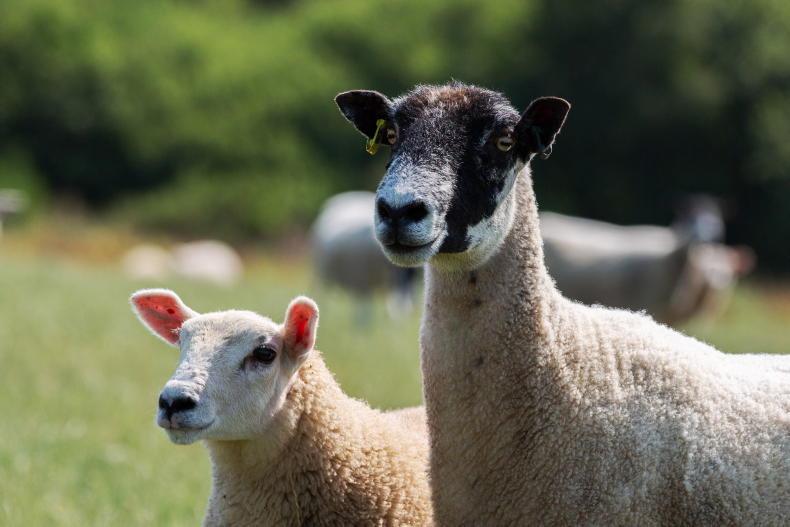

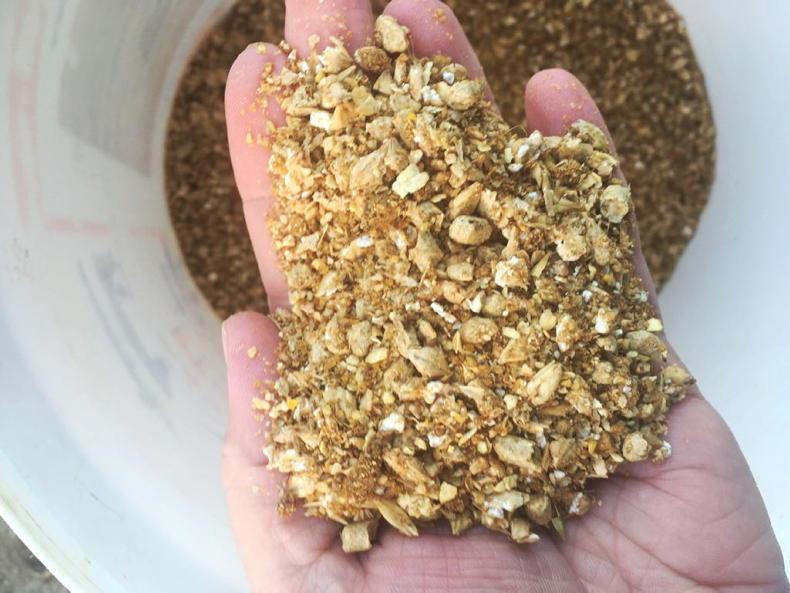

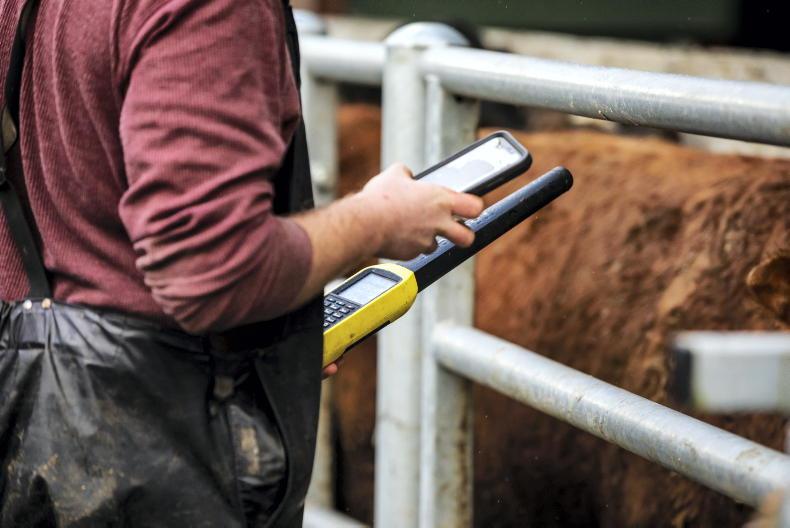
SHARING OPTIONS